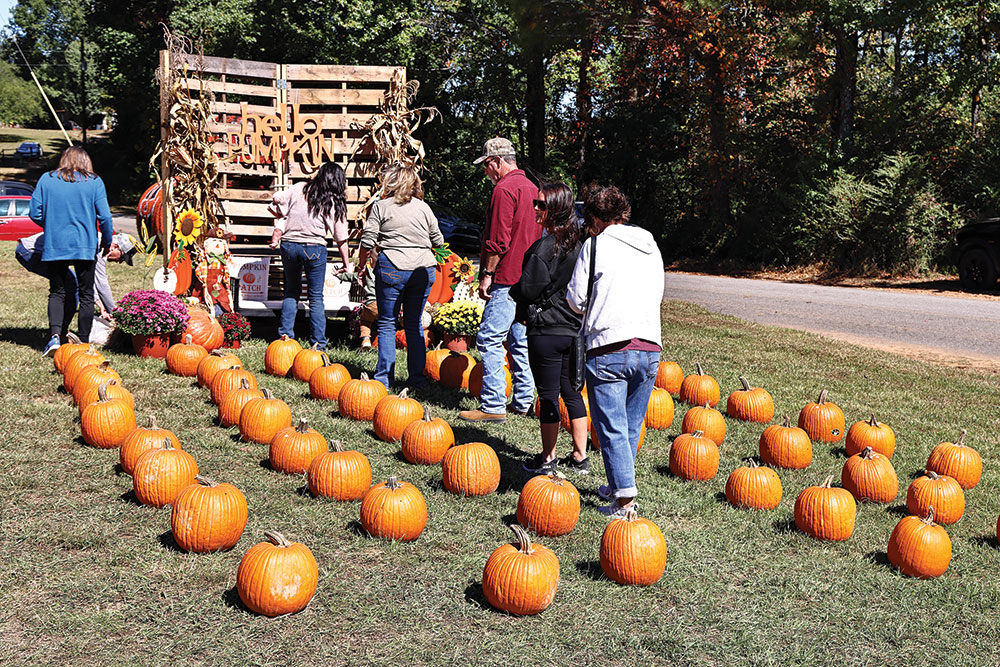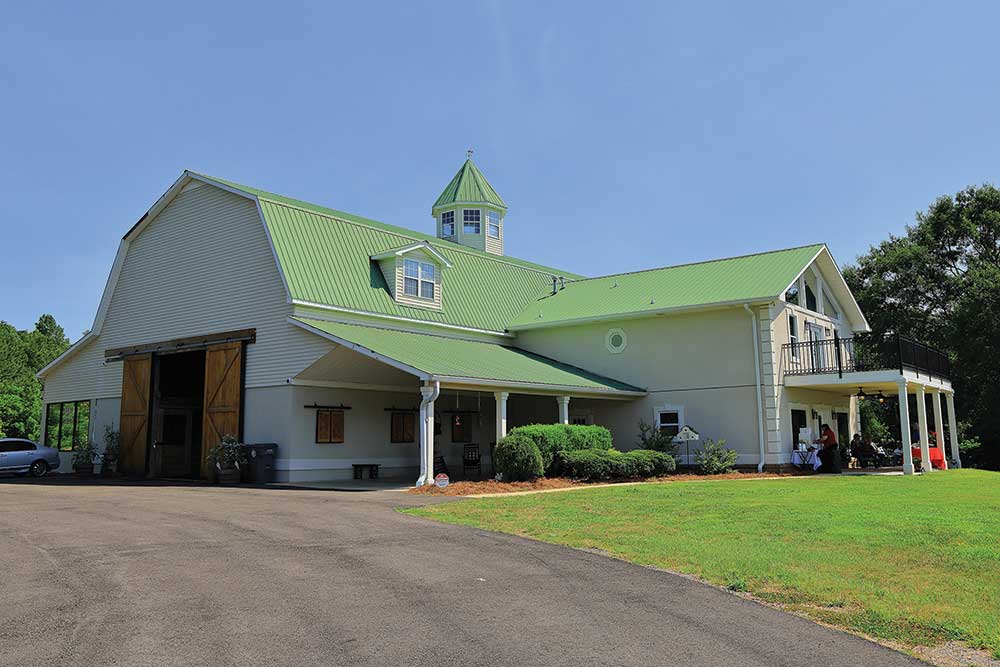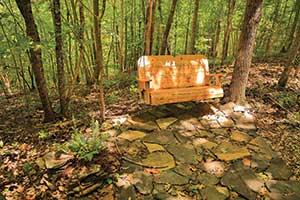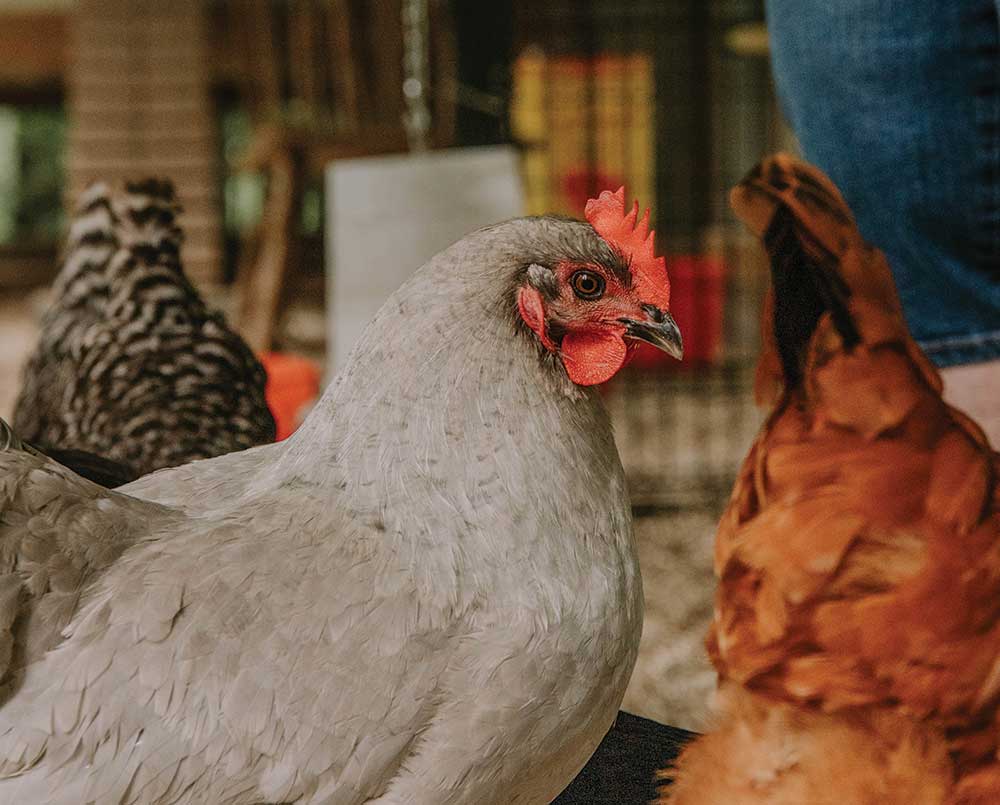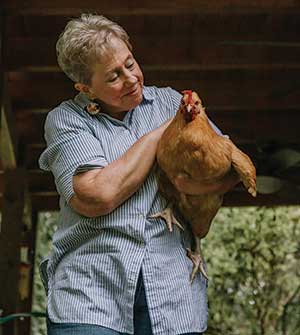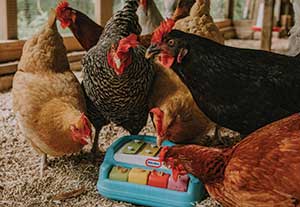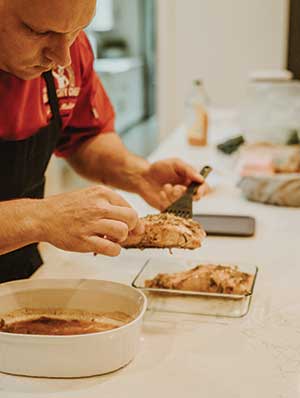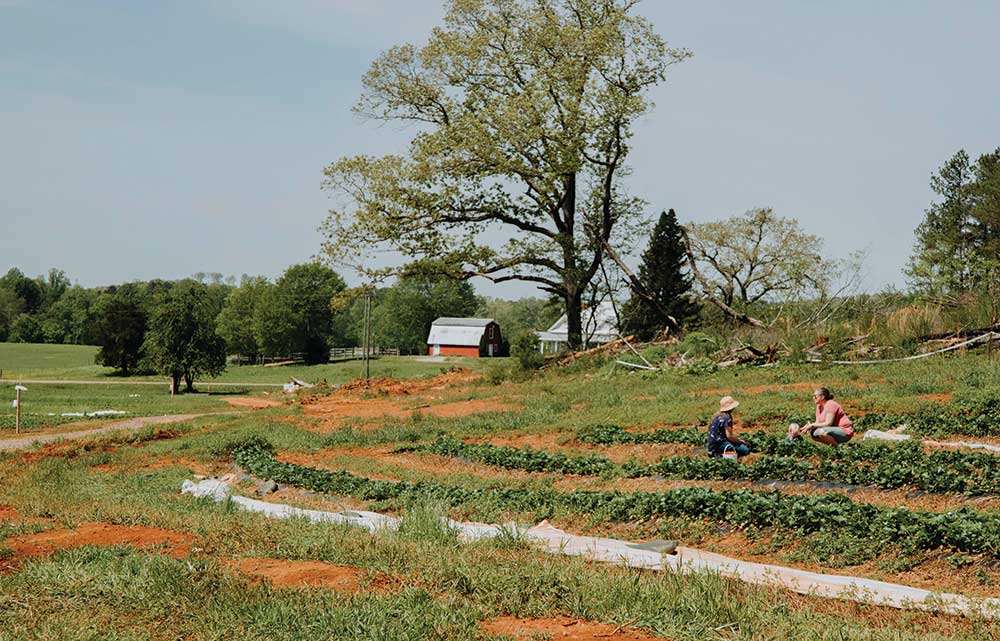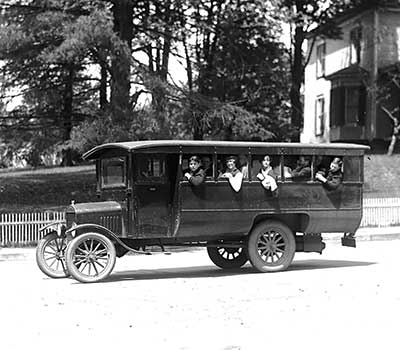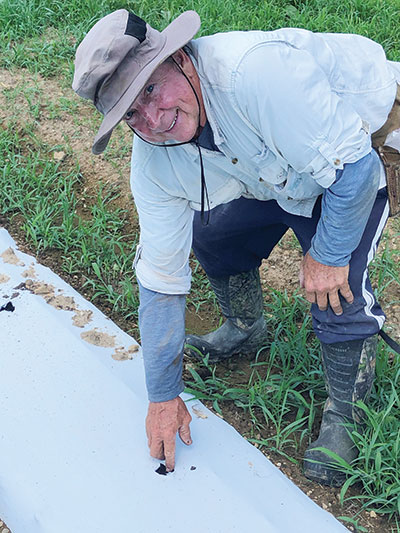Pumpkins and peanuts and handcrafts, oh my!
Story by Elaine Hobson Miller
Photos by Richard Rybka
The smell of caramel popcorn, the sounds of children laughing, the sea of tents filled with handmade crafts. There’s nothing like a fall festival to entertain you on a cool, crisp Saturday, especially one like Fall on the Farm on Chandler Mountain.
Held at Smith’s Tomato Farm, this year’s event — the seventh — featured all of the above plus good, old-fashioned guitar and banjo picking for entertainment. It doesn’t get much better than this!
“We just wanna do something for the community, where families can come out and enjoy the day with no admission charge,” said Kista Lowe, manager of Smith Tomato Farm. “We just want families to come have a good time.”
At the entrance to the festival, fall displays such as a rusty Farmall tractor with pumpkins and a scarecrow beside it provided the perfect place for a family photo shoot. Two giant John Deere 200 h.p.+ tractors normally used in the tomato fields were parked nearby.
Carrying the farm theme even further, a “tractor track” allowedtots to ride old toy tractors within the confines of a pumpkin “patch.” A bench at one end provided another photo op, with its backdrop of a slatted wood fence piece bearing a sign reading, “Hello Pumpkins.” Squeals and giggles of delight came from the two inflatable slides nearby.
Kristin Simpson painted smiling faces in her Starshine Faces booth near rows of potted mums in garnet, yellow and white, for sale at $30 a pot. Turning the corner, the familiar smells of festival foods made you hungry, no matter when you last ate breakfast. And the sight of all those crafts made you wish you had left your wallet at home, because you knew you weren’t going to get away without spending some money.
As you turned the corner, the hum of a portable generator provided a backdrop against a cacophony of bargaining voices, squeals of delight, and questions of, “How much does that cost?” Aromas of caramel popcorn and grilled meat filled the air, and the longest line was at the big booth serving tamales, asada (strips of grilled beef) and grilled chicken on quesadillas, tacos and more.
“Our (farm) crew leader’s wife did the asada booth to benefit the family of a little girl hit and killed while waiting on a school bus in Oneonta recently,” said Kista Lowe. “Her family worked on another farm in Blount County. Our crew chief is Pepe Gonzales, and his wife is Estella.”
Although Lowe said the number of vendors was down slightly this year, you couldn’t tell it from gazing at the rows of tents lined up. Some 2,000-3,000 people shopped with vendors selling jewelry, T-shirts and hoodies, water color art, pottery, candles and hand-woven dish towels. The latter sold for $15 each, with several woven on-the-spot by Marcia Wells of Springville. She brought along her loom to demonstrate her craft. “I have several more looms at home, including four I inherited from my mother,” Wells said.
Other booths sold “Welcome” signs for porches, sarapes and ponchos with western art in their designs and brightly-colored Mexican ceramics. Brown Hat Bakery, a north Gadsden establishment, contributed to the sweet aromas of baked goods at another booth.
Fall and Christmas wreaths, handmade stuffed animals, hand-decorated tumblers, caramel and chocolate-covered apples, T’s Nuts (key lime, Cajun, garlic, Parmesan, coconut rum flavors) and Woodcraft30 of Fosters, AL, with its signs, and Christmas ornaments, were lined up nearby.
Moon’s Resin Designsoffered trinket trays, tarot boards, charcuterie boards, plus birdhouses made of gourds. Jessica Wade of Bee Leaf of Springville sold candles of beeswax and soaps made with honey. Beau Blossom Blowof Springville had skull-shaped flicker lights. Run by Amethyst Blow and Jeremy Varden, who are raising money for their wedding, the business got its name from the nickname Amethyst’s grandfather used for her.
Tiffany Tibbs of Odenville manned the booth called His Grace Creations, which featured embroidered gifts and apparel such as baby bibs, tees and home decor. This was Tibbs’ third year at the festival. Embroidering, she said, is “a hobby that pays me a little bit.”
Dorrie’s Salvage Art, fromTalladega County, featured decorative signs such as smiling pumpkins, prancing roosters and a cabin in the woods painted on wood planks, not to mention banana gourds, egg gourds and birdhouse gourds transformed into Christmas ornaments and, guess what? Birdhouses!
“This is our first time here,“ said Dorrie, whose husband helps in the business. “A fellow vendor from the Rustic Bucket (another festival) in Odenville told me about it.” Fall on the Farm was well worth her time. “I’m a hoarder of wood,” she said. “My husband was a saw-miller before his stroke.”
Stephanie Abernathy of Steph’s Hand-Stamped Jewelry had a booth that sold her own creations as well as bracelets made by her daughter, Sophie. It was their second year at the festival. “I like supporting local fairs by selling something locally made, and I like seeing my students come through,” said Abernathy, who teaches second grade at Ashville Elementary.
She makes jewelry by using a hammer to stamp pre-cut designs onto aluminum, brass and copper. “I’ve been doing this for 12 years,” she said. Sophie, 13 and an eighth-grader at Ashville Middle School, makes Sophie’s Handmade Bracelets from glass and plastic beads.
Music for the day was furnished by Phillip Mulkey and Friends, an old-time bluegrass group that featured Phillip on banjo, Rick Morton on upright bass, Wes Phillips on mandolin, Mark and Adron Willingham on guitars, and Robbie Lawson, female vocalist singing harmony and playing guitar.
“We always hold this on the first Saturday in October, and there’s no charge for parking or admission,” said Kista Lowe. “Come out and join us next year!”














